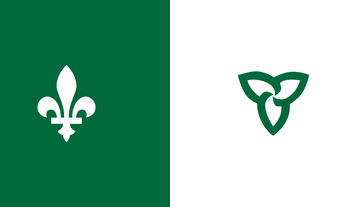Settlement
North Bay lies roughly along the historic "Nipissing Route" of the Fur Trade, where the portage of La Vase connected the waters of Trout Lake and the Ottawa and Mattawa rivers with Lake Nipissing, French River and Georgian Bay (see Fur Trade Routes).
Development
Its development awaited the slow progression of settlement up the Ottawa Valley and from southern Ontario that was initiated by the arrival of the Canadian Pacific Railway (1882). Later rail connections were made to Toronto (1886) and to the resource areas northward (1904). Town status (1891) followed by city status befitted North Bay's role as a regional supply centre and key rail point. It did not "boom" in the manner of many northern centres, but it also avoided the "bust" cycle so intimately associated with such resource-based growth.
Economy and Labour Force
The city's geographically advantageous position supported a variety of economic endeavours. It remains a major fur centre: its wild-fur auctions are among the largest in the world. Wood and wood products remain important (see Lumber and Wood Industries). Recently, information technology, processing and general manufactures have supplemented traditional industries and tourism. North Bay is also home to a military base, Nipissing University and Canadore College of Applied Arts and Technology. North Bay's population is largely of British origin with a strong French-Canadian presence (see Francophone) and notable elements of Dutch, Italian, Scandinavian and German populations - beneficiaries of a prosperous urban life with proximity to the "Near North."
Cultural Life
In 2017, the home of the Dionne Quintuplets (born in nearby Corbeil) was moved to North Bay where it now serves as a museum. The invention of the ice-skating sport Ringette, which was first played in North Bay in 1963, is celebrated locally.

 Share on Facebook
Share on Facebook Share on X
Share on X Share by Email
Share by Email Share on Google Classroom
Share on Google Classroom



